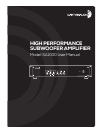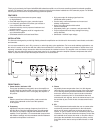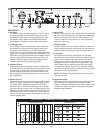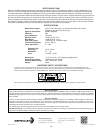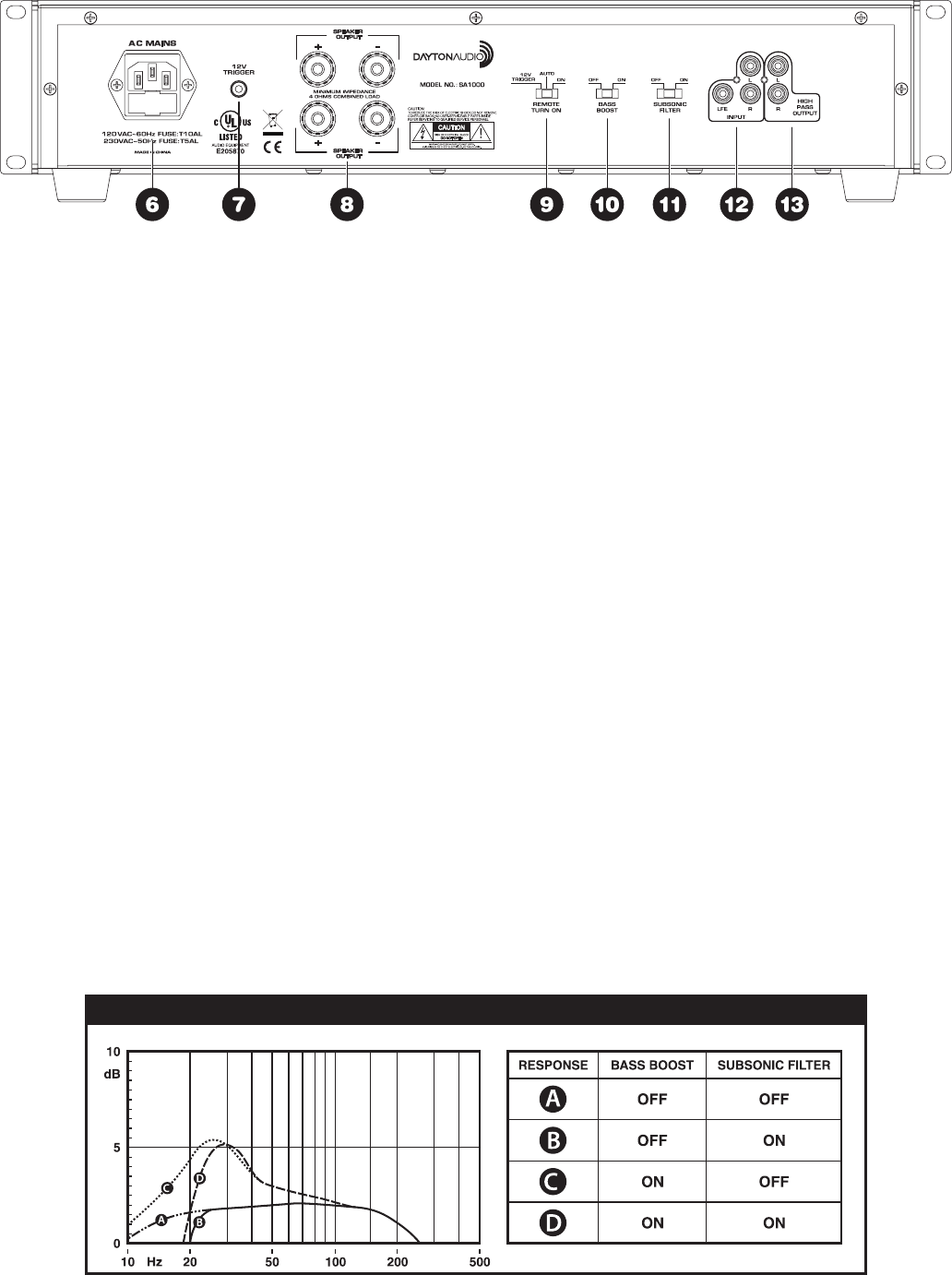
(3)
REAR PANEL:
6. AC Power
The SA1000 comes shipped standard for 110V U.S. opera-
tion; simply connect the included IEC power cord to your
wall outlet. For 220V input, remove the fuse holder, rotate
180 degrees, and re-install. In most 220V applications a
separate power cord will be required and is not included.
7. 12V Trigger Input
The 12V trigger input is a handy feature when connecting
the amplifier to an automated audio system. The 3.5mm
mini-plug jack will accept up to a 12V DC output from
another device, or from a separate power supply. When the
trigger input is energized, the amp turns from standby to ON
mode. When using the SA1000 with a home theater receiver
without a trigger output, the voltage can come from a 12V
wall wart (3.5mm tip-positive connector) plugged into the
receiver’s switched outlet and the trigger input.
8. Speaker Outputs
Speaker level output connections carry the amplified signal
to the subwoofer drivers. Binding posts will accept bare wire,
banana plugs, or spade plugs. Two sets of outputs are pro-
vided so multiple systems can be connected. When using
both outputs the combined load must have a minimum of 4
ohms impedance!
9. Remote Turn On
Selects the turn-on stimuli that will put the amplifier in ready
mode. “12V trigger” setting relies on voltage going into the
12V trigger input to activate the amplifier. “Auto” setting
senses a signal on the RCA line-level inputs and automati-
cally puts the amp in ready mode. “On” setting puts the amp
constantly in ready mode so that it can be controlled by the
master power switch on the front panel. In “Auto” mode, the
amplifier will take approximately 15 minutes to turn off from
ready to standby mode.
10. Bass Boost
Selects a bass boost filter with +3dB @ 25Hz, Q=1.4. Allows
the user to add boost to the low end response without using
the built-in parametric EQ. This leaves the parametric EQ
function to address room modes to cut out an excessively
loud room resonance.
11. Subsonic Filter
Selects a subsonic filter with -3dB @ 18Hz, Q=.8. Allows the
user to remove the subsonic information from the signal and
tighten the low end response of some subwoofer systems.
12. Line Inputs
RCA-style jacks receive the audio signal from standard
line-level audio sources. When used in a two-channel stereo
system, both the left and right audio inputs should be con-
nected and are internally summed to a mono output. The
adjustable crossover is in effect when using the left or right
inputs. When using an amplifier with an audio source that
is mono and pre-filtered, the LFE input should be used; this
bypasses the onboard low-pass crossover for more accurate
reproduction of the incoming signal.
NOTE: Bass Boost and Subsonic Filters are active on both
LFE and L/R inputs.
13. High Pass Output
RCA-style jacks allow the line level input signal to be looped
back into other audio equipment. The high pass signal
utilizes a 12 dB per octave filter with an output slope of -3dB
@ 80Hz. This feature is useful for connecting the signal to
distributed audio systems.
BASS BOOST / SUBSONIC FILTER SETTINGS
Frequency Response Switch Settings



